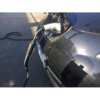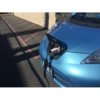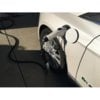If finally bit last week, and got my two wall connectors in master/slave configuration on a 60A circuit to charge a Model X 90D and a '15 Leaf via JDapter Stub. I can definitely confirm that with DIP switch 2 up ("Normal", as labeled inside the wall connector), the Leaf takes ~20s to start charging, but with it down ("Legacy"), it charges immediately.
@TonyWilliams one oddity that you may be able to shed some light on is that if I have the Tesla charging at the full 48A, but then plug the other connector into the JDapter Stub (which is
not connected to the Leaf) the Tesla will immediately drop to 24A (or ~20s later, when DIP switch 2 is up). If the second wall connector is actually connected to the Leaf, it will properly load share with the Tesla gradually using more and more until the Leaf is at 100%. I can't remember exactly, but it seemed like the Tesla only got up to 42-46A in that case. My conclusion is that when connected to the JDapter Stub the wall connector can detect
something, but is confused by no active charge session so just asks for an even split of available load. I tried both digital and analog communications, and switched which one is master/slave, but there was no change. It took me long enough just to diagnose that it was the JDapter Stub causing the drop in load! It's not a deal killer, it just means I need to remember to disconnect the JDapter Stub from the Tesla Wall Connector if I want/need to charge the Model X more quickly.





